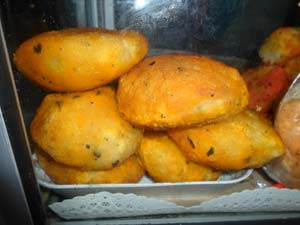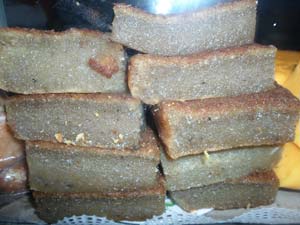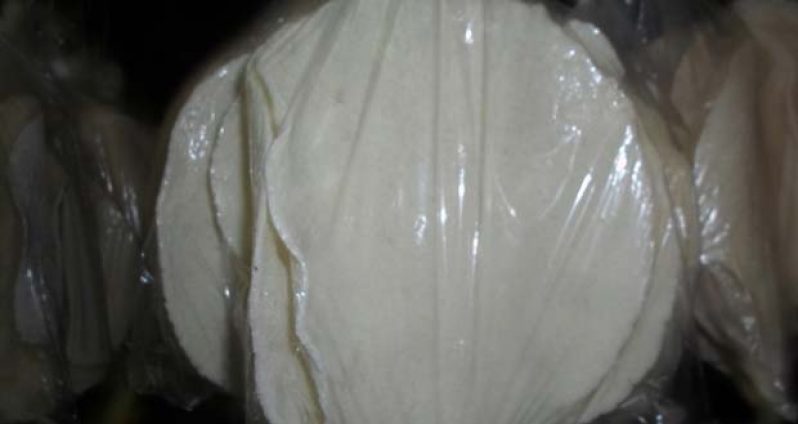THE sweet cassava is traditionally known to be a simple ‘stand-alone’ staple, but it is amazing the way the innovative genius of Guyanese chefs has, over time, changed the concept, preparation and presentation of this vegetable to new and appealing culinary heights.

It must be made clear that there is a distinct difference between ‘bitter cassava’ and ‘sweet cassava’. Sweet cassava is immediately edible upon being cooked, and can be prepared in a variety of dishes, no less than ten of which are popular and relished by probably all ethnic groups across Guyana today.
Bitter cassava, on the other hand, contains toxins (cyanide) which must be carefully extracted before the cassava can be edible.
In its raw and rugged form, both the bitter and sweet cassava root will undoubtedly appear unattractive to the eye; but expertly cooked, garnished and served in a variety of savoury dishes and desserts for which it has become well known, the cassava root turns out to be the most delectable and appetizing cuisine of all time.
Sweet Cassava Delight

Some of the better known cassava-based cuisine include cassava bread, cassava pone, cassava yum-yum, cassava balls, egg balls, savoury cassava balls, cassava puffs with ground chicken filling), cassava casserole, cassava salad, ‘boil and fry’, cassava quenchers (a taco-like mini-sized cassava cake baked with red sugared coconut filling), farine (a cereal which can be eaten uncooked or made into porridge), cassava pone, cassava casserole, hot and tasty pepperpot made from rich cassava cassareep.
Thought to have originated in South America, the cassava, both bitter and sweet, was the main staple cultivated and consumed by the Amerindians, the indigenous peoples of the Guianas whom Christopher Colombus encountered when he ‘discovered’ the mainland of the Americas in the late 15th Century.
History has it that the cassava originated in Nigeria, on the continent of Africa, and until today Nigeria continues to be one of the biggest producers of cassava.
Be that as it may, cassava will go down in the annals of history as having provided food for diverse populations of Guyana amidst mixed economic fortunes.
The Amerindians used the cassava root (cassava vegetable) and other useful by-products for various food preparations and medicinal purposes. Hence the cassava, until today, is quite understandably considered an ethnic dish for the indigenous peoples of Guyana.
Down through the years, and until rice and corn became popular sources of calories, the cassava used to be widely produced and consumed around British Guiana. Even after the slaves, indentured labourers and people of other ethnic extractions were brought to work on the plantations, the cassava continued to be the main staple, and was utilised across the spectrum, effectively bridging ethnic enclaves across the country.
By-products of the bitter cassava
The main product of the bitter cassava is cassava bread, a crispy, biscuit-like product which traditionally goes along well with pepperpot, gravies, fried or stewed fish, or other meat products.
Cassava bread is made from the residue after the juice of the cassava has been extracted using a long cylindrical nibbi extractor called a ‘matapee’. This residue is then dried for about a day or two, sifted, then baked on a scorching hot grid. It may be used while soft and hot, as preferred by the indigenous peoples, or dried out in the sun for a few hours, then packaged/stored.
Other by-products derived from the bitter cassava include:
* Cassareep: One of the finest and most sought-after condiments, and one of the main ingredients used in making the popular Guyanese dish ‘pepperpot’.
Interestingly, the same toxic juice extracted from the bitter cassava after it has been grated is boiled for several hours in a large pot, the scum being continuously skimmed off as it comes to the surface until that being boiled is thick, tacky, and of a pure dark brown, almost black look. That substance is the pure, unadulterated cassareep. It has a tacky consistency, and, when bottled, does not pour easily. Cassareep, as said before, is one of the finest and most sought-after condiments in Guyanese cuisine.
* Kadaruka, an Amerindian word meaning ‘gravy’, is made by adding water to the scum extracted from the cassareep when it is being boiled. It is re-boiling for several minutes, and seasoned meat (fish or wild meat) and hot peppers are added while the kadaruka is brought to the boil. The end product is a tasty and highly nutritious gravy which is preferably eaten with freshly baked, soft and warm cassava bread. It is an Amerindian specialty.
* Cassava starch is, in effect, the white sediment which settles at the bottom of the (toxic) juice extracted from the grated cassava. The starch is used in laundering to keep otherwise soft and soggy materials stiff, and to make pronounced seams in cotton or denim garments.
* Cassava flour
* Farine: An Amerindian cereal made from the residue of what has been used to make cassava bread. Already, Guyana’s farine has carved for itself a niche market in Brazil, and Guyana is now looking to boost cassava production as it seeks to produce farine for export to Caribbean countries as well.
According to the Food and Agricultural Organisation of the United Nations (UNFAO) Global Cassava Development Strategy, cassava is the third most important source of calories in the tropics, after rice and corn.
(By Shirley Thomas)



.jpg)









